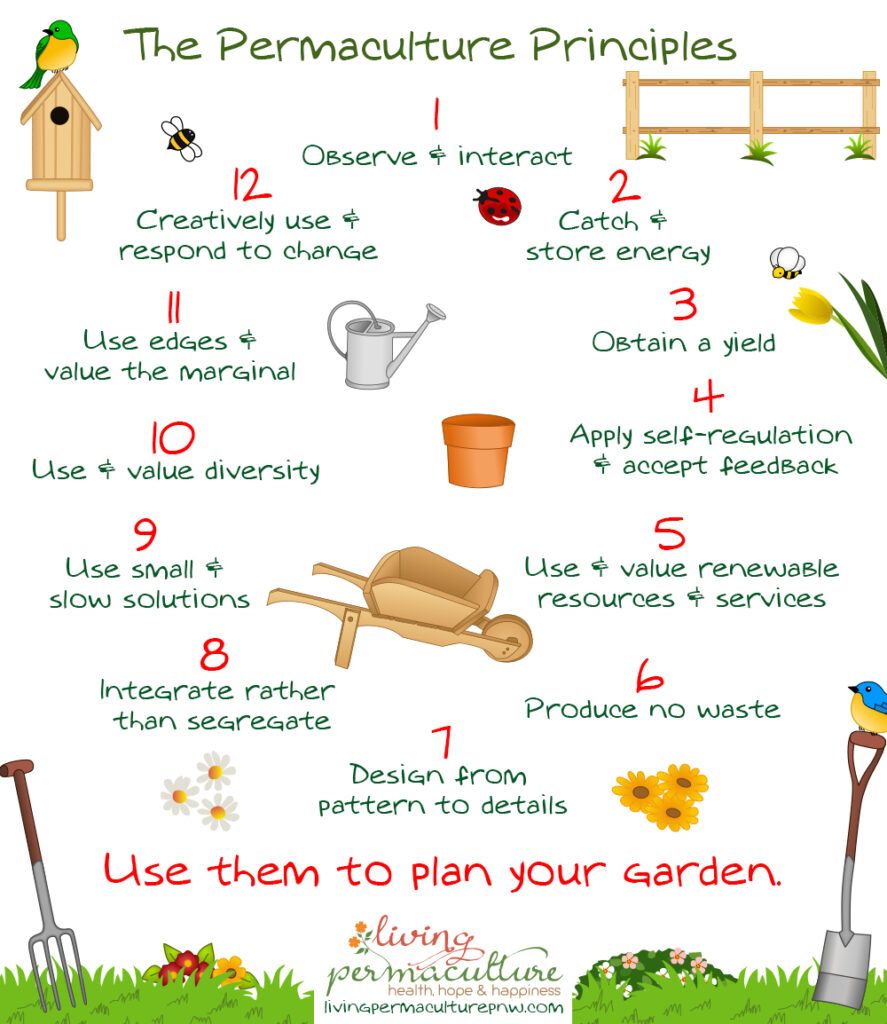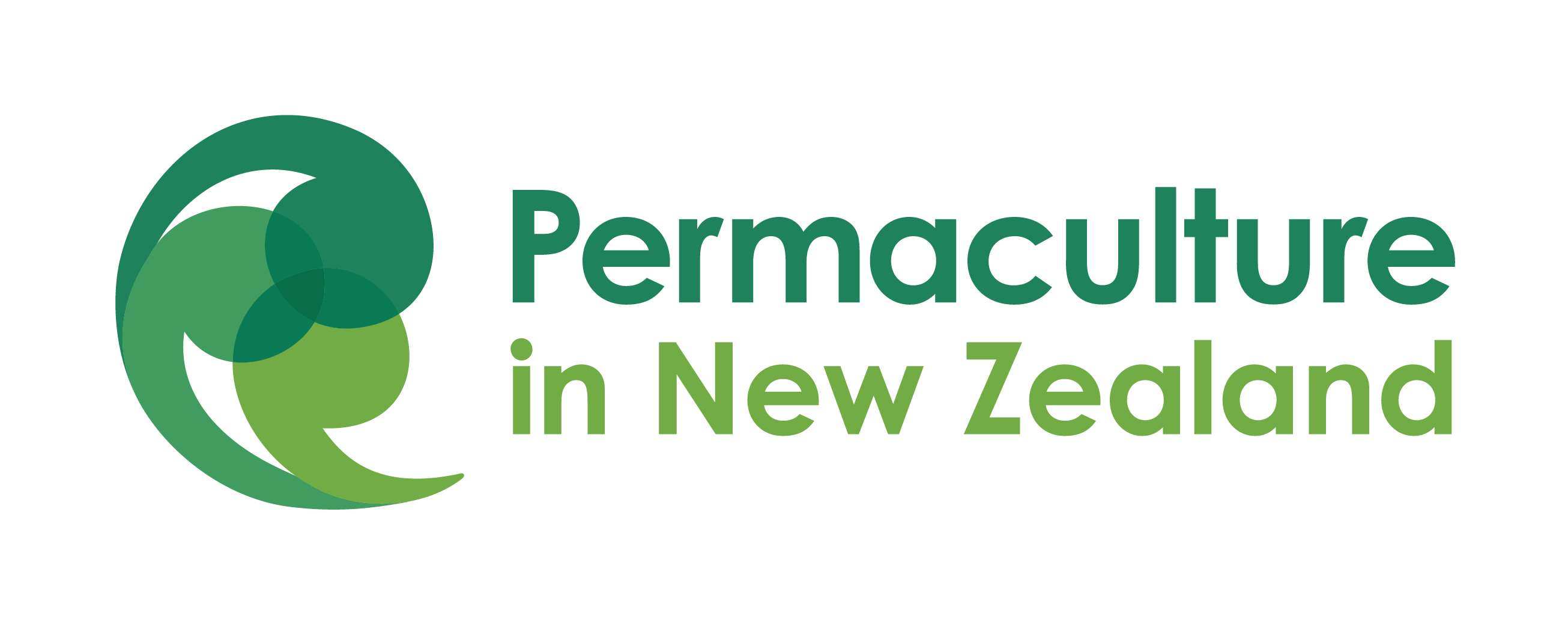
Permaculture is a design approach that can be used by anyone to create sustainable human environments where people are empowered to provide for their needs through the establishment of productive environments. This can be applied within the home, in the garden, on the farm, in business and in the wider community.
Permaculture is based on principles that create resilience, diversity and productivity within an interconnected system, providing us a new perspective that allows us to achieve more with less effort and fewer inputs from external sources.
Permaculture is a tool that can be applied to both our social and physical worlds, encouraging us to apply an ecological whole systems approach to design by mimicking the patterns, complexity and adaptivity of nature.
“Permaculture is a philosophy of working with, rather than against nature; of protracted and thoughtful observation rather than protracted and thoughtless labor; and of looking at plants and animals in all their functions, rather than treating any area as a single product system” … Bill Mollison.
The term “permaculture” was coined by Bill Mollison and David Holmgren in the 1970s and is derived from “permanent agriculture” or “permanent culture” and its creators encourage starting in our home and working towards a closed loop system with minimal inputs where every element performs multiple functions.
As a design system Permaculture can be applied to all living styles, from apartments to farms and everything in between, with a focus on the integration of landscape and people to the benefit of all. As a tool, permaculture can be used beyond the home garden and farm and applied to energy, waste and water structures, agroforestry, natural building and other elements within the built environment. It also incorporates the invisible structures and other intangible aspects of society such as ethical decision-making, social cooperation, and fair distribution of resources.
Permaculture is based on the principles of observing and mimicking natural ecosystems, integrating diverse elements in a harmonious way, and maximizing beneficial relationships between elements. It emphasizes the use of ecological design principles such as diversity, resilience, and self-sufficiency. It is also often used as a framework for designing sustainable and regenerative solutions to global challenges such as climate change, food security, and social inequality. Overall, permaculture seeks to create harmonious and regenerative relationships between humans and nature, while promoting sustainability, resilience, and social equity. So, it is not just a set of practices, but also a holistic and integrated approach to design and living.
Underpinning Permaculture design are the ethics of; Earth Care, People Care, and Fair Share encouraging an to approach life that prioritises a deep connection to the earth and its inhabitants, emphasizing sustainable and regenerative practices that promote environmental stewardship, social well-being, and economic fairness. This is supported by a range of principles that enable us to apply natural patterns in the designs we create and are applicable in all climates and scales the principles are an integral aspect of the design process.
Permaculture Ethics:
- Earth Care: This ethic emphasizes the importance of caring for the Earth, recognizing that all life is interconnected and that the health and well-being of our planet is essential for the survival and flourishing of all living beings. Earth care involves taking responsible and sustainable actions to protect and restore the natural environment, including conserving resources, regenerating ecosystems, and minimizing harm to the environment.
- People Care: This ethic focuses on caring for people, including ourselves, our communities, and future generations. It involves nurturing healthy relationships with ourselves, others, and our communities, promoting social justice, fairness, and inclusivity, and meeting basic human needs such as food, water, shelter, and healthcare. People care also emphasizes empowering individuals and communities to participate in decision-making and taking actions that promote the well-being and resilience of people.
- Fair Share: This ethic emphasizes the importance of sharing resources and surpluses in a fair and equitable manner. It encourages us to consider the needs of others and future generations, and to avoid overconsumption, waste, and unfair distribution of resources. Fair share involves creating systems that are equitable, just, and sustainable, and ensuring that resources are used wisely and shared in a way that benefits all.
These three ethics of permaculture are interconnected and mutually reinforcing, guiding practitioners to design and implement regenerative systems that promote sustainability, resilience, and social equity. They provide a moral compass for decision-making and action, helping practitioners align their choices with the principles of permaculture and work towards creating a more harmonious and regenerative relationship between humans and nature that benefits all.
